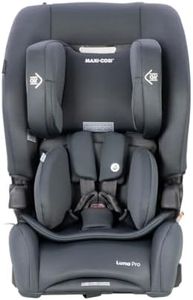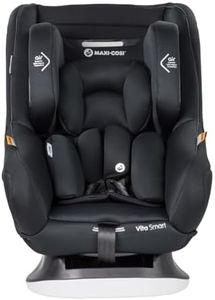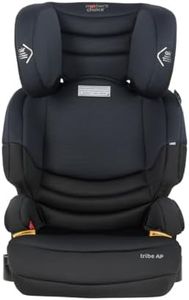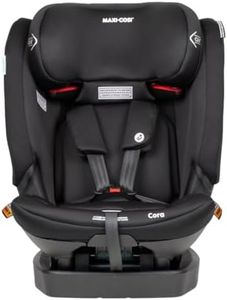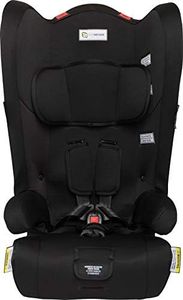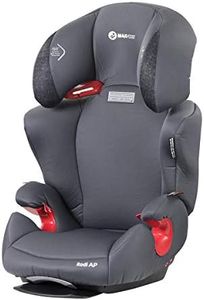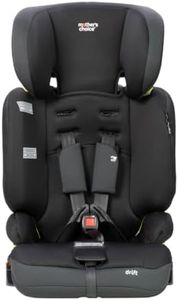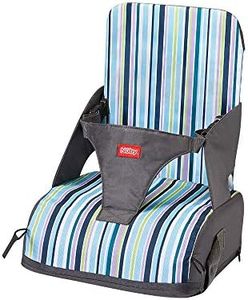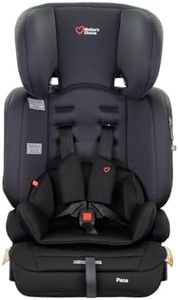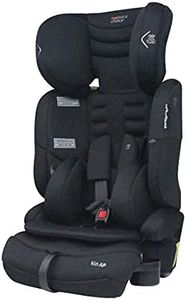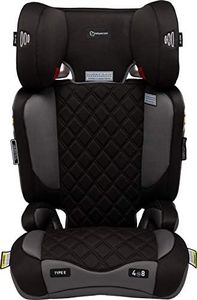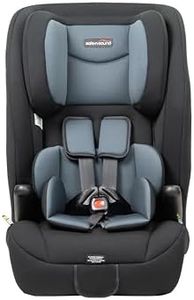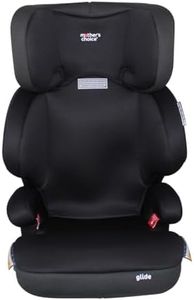We Use CookiesWe use cookies to enhance the security, performance,
functionality and for analytical and promotional activities. By continuing to browse this site you
are agreeing to our privacy policy
10 Best Car Booster Seats
From leading brands and best sellers available on the web.Buying Guide for the Best Car Booster Seats
Choosing the right car booster seat is essential for your child’s safety and comfort during car rides. As your child grows and outgrows a traditional car seat, a booster seat helps to properly position the adult seat belt on their body. The right booster ensures your child is protected in the event of a sudden stop or accident, and also makes rides more enjoyable for them. Understanding key features and what they mean for your family will help you select a seat that suits your child’s needs and your vehicle.Weight and Height LimitsEvery booster seat is designed for children within certain weight and height ranges. These limits are important because using a booster outside of its recommended range can compromise its effectiveness and your child’s safety. Generally, booster seats are divided into two segments: lower-limit boosters for younger or smaller children, and higher-limit boosters for older or taller kids. Always check the manufacturer’s recommendations and choose a seat that matches your child’s current size, but also consider one that will fit them for as long as possible as they grow.
High-Back vs. BacklessBooster seats come in high-back and backless designs. High-back boosters offer additional head and side support, which is useful if your vehicle does not have built-in headrests or if your child still tends to fall asleep during rides. Backless boosters are lighter and easier to transfer between cars, but are best suited for vehicles with proper head and neck support. Consider your car’s seat design and your child’s comfort and habits when choosing between these two types.
Seat Belt Positioning GuidesGood booster seats have guides or slots to help route the car’s seat belt correctly over your child’s shoulder and lap. Proper positioning is vital for the belt to restrain your child safely in a crash. Some guides are adjustable for growing kids, while others are fixed. When selecting a seat, make sure the guides are easy to use and that the seat helps the seat belt fit snugly without riding up onto your child’s neck or stomach.
Ease of Installation and UseA booster seat that is easy to install and adjust will encourage proper use every time. Look for seats with clear instructions and features like latch connectors (if your car supports them), which help keep the booster in place when not in use. Also, check how easily your child can sit in and get out of the seat or if they can buckle themselves, which can be important for daily routines or carpools.
Comfort FeaturesPadded cushions, arm rests, cup holders, and breathable fabrics can make a booster seat more enjoyable for your child, especially on longer journeys. Seats with adjustable headrests or recline options can accommodate your child as they grow and improve comfort. Consider how much time your child spends in the car and what features will make the ride smoother for them.
Size and Fit for Your VehicleNot all booster seats fit perfectly in every car. Some have wider bases or higher backs that may not suit smaller vehicles or three-across seating configurations. It’s important to measure your car’s back seat and check the booster seat’s dimensions before buying, especially if you need to fit multiple seats or passengers side by side.
Safety Ratings and CertificationAll booster seats sold must meet standard safety requirements, but some may offer extra features or perform better in crash tests. Look for seats that meet or exceed local regulatory standards and check for third-party safety ratings. Certification labels on the seat and checking for recalls can help give you confidence in the seat’s safety.
